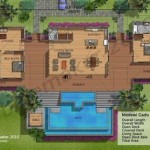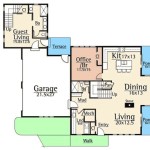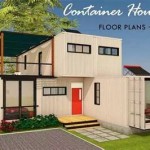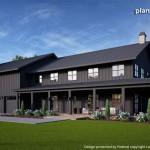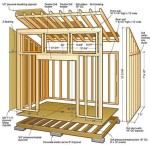Build Your Dream Tree House: The Ultimate Plan Guide PDF
The construction of a tree house represents a unique blend of architectural ingenuity, environmental awareness, and childhood fantasy. A well-designed tree house can serve as a recreational space for children, a tranquil retreat for adults, or even a functional outdoor office. The process, however, demands careful planning and execution, especially when dealing with the dynamic nature of living trees. A comprehensive plan guide, often available in PDF format, serves as an indispensable resource for ensuring a safe, sustainable, and aesthetically pleasing structure.
The "Build Your Dream Tree House: The Ultimate Plan Guide PDF" encapsulates the technical knowledge, design considerations, and practical steps necessary to navigate the complexities of tree house construction. This guide typically covers a wide range of topics, from selecting the appropriate trees and designing the structure to understanding load distribution and implementing safety measures. A well-structured plan guide will empower individuals, regardless of their construction experience, to embark on this ambitious project with confidence.
Key Point 1: Tree Selection and Assessment
The foundation of any successful tree house lies in the selection of healthy and structurally sound trees. This process involves a thorough assessment of potential host trees to determine their suitability for supporting the weight and stress of a tree house structure. Factors to consider include species, age, health, and branching pattern.
Species plays a significant role in the tree's load-bearing capacity and resistance to decay. Hardwood species, such as oak, maple, and ash, are generally preferred for their strength and durability. Softwood species, like pine and cedar, may be used, but require careful consideration of their lower density and higher susceptibility to rot and insect infestation.
The age of the tree is another critical factor. Mature trees with well-established root systems and thick trunks are better equipped to handle the additional load and stress. Young trees, while potentially appealing in terms of height, may lack the necessary structural integrity and could be damaged by the installation of a tree house. A general rule of thumb is that the tree should have a diameter of at least 12 inches at chest height (DBH) to be considered a viable candidate.
Visual inspection of the tree is essential to identify any signs of disease, decay, or structural weaknesses. Look for evidence of fungal growth, cavities in the trunk or branches, cracks in the bark, or excessive leaning. A professional arborist should be consulted to assess the tree's health and stability, and to provide recommendations for any necessary treatments or pruning.
The branching pattern of the tree will influence the design and support system of the tree house. Trees with multiple main branches that fork at a relatively low height are ideal, as they provide natural support points and distribute the load more evenly. Trees with a single main trunk and limited branching may require more complex support systems to ensure stability.
Key Point 2: Design Principles and Structural Considerations
Once suitable trees have been identified, the next step is to develop a design that integrates seamlessly with the natural environment while ensuring structural integrity and safety. This involves careful consideration of the tree house's size, shape, layout, and the methods used to attach it to the trees.
The size of the tree house should be proportional to the size and strength of the host trees. Overly large structures can place excessive stress on the trees, leading to damage or even failure. A general guideline is to limit the tree house's footprint to no more than 25% of the tree's crown spread.
The shape of the tree house can be tailored to the specific characteristics of the trees. Irregular shapes that follow the natural contours of the branches can create a more organic and visually appealing design. However, complex shapes may require more intricate framing and support systems.
The layout of the tree house should prioritize safety and functionality. Consider the placement of stairs or ladders, railings, and safety netting to minimize the risk of falls. The interior space should be designed to accommodate the intended use, whether it's for play, relaxation, or work.
The method of attaching the tree house to the trees is a critical factor in ensuring its stability and minimizing damage to the trees. Traditional methods, such as bolting directly into the trunk, can restrict growth and create entry points for disease. Modern techniques, such as tree bolts with flexible attachments or suspension systems, allow the trees to move and grow naturally while providing secure support.
Load distribution is a crucial aspect of tree house design. The weight of the structure, including the occupants and any furniture, must be distributed evenly across the supporting trees. This can be achieved through the use of multiple support points, strategically placed beams and joists, and a well-engineered framing system. A structural engineer should be consulted to ensure that the design meets all applicable safety standards and regulations.
Key Point 3: Construction Techniques and Safety Measures
The construction phase requires meticulous attention to detail and adherence to safety protocols. Using the right materials, employing appropriate construction techniques, and implementing safety measures are essential for creating a durable and secure tree house.
The choice of materials will impact the tree house's longevity, aesthetics, and environmental footprint. Pressure-treated lumber is commonly used for framing and decking due to its resistance to decay and insect infestation. However, it's important to select lumber that is treated with environmentally friendly preservatives. Alternative materials, such as reclaimed wood or composite decking, can also be used to reduce the environmental impact.
Appropriate construction techniques are vital for ensuring the structural integrity of the tree house. This includes using proper fastening methods, such as screws and bolts, rather than nails, to create strong and durable connections. It also involves carefully cutting and fitting the lumber to ensure tight joints and prevent water from entering the structure.
Safety measures should be implemented throughout the construction process to protect both the builders and future occupants. This includes wearing appropriate personal protective equipment (PPE), such as hard hats, safety glasses, and gloves. It also involves using safe lifting techniques to avoid back injuries and working at heights with appropriate fall protection equipment.
Regular inspections should be conducted during and after construction to identify and address any potential safety hazards. This includes checking the stability of the support system, the integrity of the framing, and the security of any railings or safety netting. Any deficiencies should be promptly corrected to ensure the safety of the tree house.
Furthermore, consider implementing fire safety measures, such as installing smoke detectors and fire extinguishers. Ensure that there are clear escape routes in case of an emergency. These precautions can significantly reduce the risk of fire-related injuries and property damage.
Finally, remember that tree health is paramount. Avoid causing unnecessary damage to the trees during construction. Prune branches carefully, ensuring clean cuts to promote healing. Protect the root system from compaction and erosion. Regular monitoring of the trees' health is essential for the long-term viability of the tree house.

The Tahoe Wraparound 2 Tree Rectangular Treehouse Plan

8 Cool Ideas For A Kids Treehouse

The Tioga 2 Tree Mini Treehouse Plan Standard Plans Attachment Hardware

Pete Nelson S Treehouse Designs For Diy Ers

How To Build A Treehouse With Pictures Wikihow

How To Build A Treehouse With Pictures Wikihow

8 Tips For Building A Treehouse Family Handyman

Treehouse Plans Custom Tree House Design By Expert Builders

How To Build A Treehouse With Pictures Wikihow

How To Build A Treehouse 17 Steps With Pictures Instructables
Related Posts

